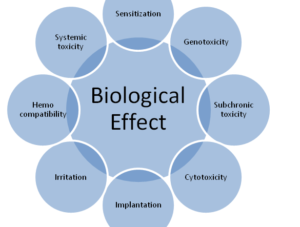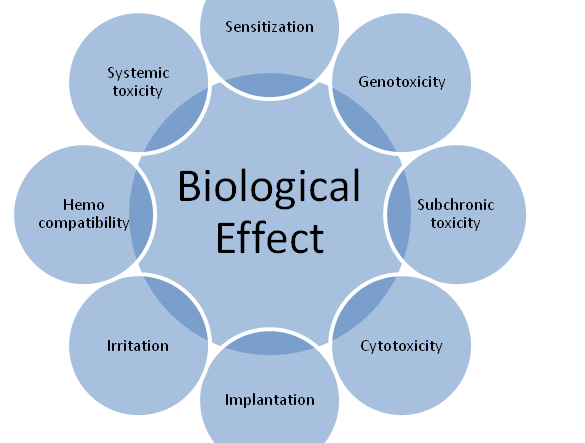In the ever-evolving field of medical science, the pursuit of safer, longer-lasting, and more efficient materials has led researchers and practitioners to embrace titanium as a cornerstone of innovation. Among the many materials used in healthcare, titanium stands out for its exceptional biocompatibility, strength, and resistance to corrosion, making it a preferred choice in everything from surgical instruments to permanent implants.
This remarkable metal is not only revolutionizing modern medicine—it is also improving patient outcomes, extending the lifespan of medical devices, and opening the door to futuristic developments in regenerative medicine and personalized healthcare.
In this comprehensive article, we will explore what makes titanium biocompatible, how it’s used in modern medical science, and why it continues to be a material of choice for the healthcare industry.
What is Biocompatibility, and Why Does It Matter?
Biocompatibility refers to a material’s ability to be in contact with the human body without eliciting harmful immune or toxic responses. For a material to be considered biocompatible, it must:
- Not cause inflammation, allergic reaction, or toxicity
- Be chemically stable in the body’s environment
- Support or not interfere with natural biological functions
- Allow for tissue integration when necessary (e.g., in implants)
Titanium excels in all these aspects, which is why it has earned its place as one of the most trusted materials in modern biomedical applications.
Why Titanium is Highly Biocompatible
Titanium’s unique properties allow it to integrate seamlessly with human tissue and function effectively within the body.
1. Corrosion Resistance in Biological Environments
The human body contains fluids that are rich in salts, enzymes, and other reactive compounds. Most metals would corrode in such an environment, but titanium naturally forms a passive oxide layer (TiO₂) on its surface. This layer protects the metal from corrosion and degradation, allowing it to last decades inside the body without breaking down.
2. Non-Toxic and Hypoallergenic
Unlike metals such as nickel or chromium, titanium is non-toxic and rarely causes allergic reactions. This makes it an ideal material for patients with metal sensitivities, especially in applications like dental implants and orthopedic prosthetics.
3. Excellent Osseointegration
Titanium has a rare ability to bond directly with bone, a phenomenon known as osseointegration. This is crucial for implants like hip replacements or dental screws, where the material must become a permanent part of the body’s structure. Titanium’s surface texture and chemistry support bone cell adhesion and growth, ensuring strong, stable connections.
Medical Applications of Titanium
Thanks to its biocompatibility and mechanical performance, titanium is now used in a wide variety of life-saving and life-enhancing medical devices.
1. Orthopedic Implants
Titanium is extensively used in:
- Joint replacements (hip, knee, shoulder)
- Spinal fusion hardware
- Fracture fixation devices like screws, plates, and rods
Its light weight and fatigue resistance allow it to function in load-bearing roles while reducing patient discomfort and the risk of implant failure.
2. Dental Implants
One of the most common uses of titanium in the body is in dental implants, where it serves as the root for artificial teeth. Titanium’s ability to fuse with jawbone ensures long-term stability and success, with survival rates exceeding 95% over a decade or more.
3. Cardiovascular Devices
Titanium’s corrosion resistance and strength are critical in:
- Heart valve replacements
- Pacemaker casings
- Vascular stents
It allows these devices to operate reliably within the circulatory system without triggering inflammation or thrombosis.
4. Surgical Instruments
Titanium is widely used for making scalpels, forceps, retractors, and other precision tools. These instruments benefit from:
- Light weight (reducing surgeon fatigue)
- Non-magnetic properties (important in MRI environments)
- Long-lasting sharpness and durability
5. Prosthetics and Mobility Aids
Titanium is increasingly used in the development of lightweight prosthetic limbs and mobility supports that offer high strength and comfort to users. It helps create custom-fit, performance-driven solutions that enhance mobility and independence.
Titanium in Regenerative and Personalized Medicine
Beyond traditional implants and instruments, titanium is at the frontier of cutting-edge medical research.
3D-Printed Implants
Additive manufacturing (3D printing) with titanium powders allows for the creation of custom implants tailored to individual anatomy. This is revolutionizing craniofacial, spinal, and orthopedic surgeries by:
- Reducing recovery time
- Improving fit and function
- Minimizing complications
Titanium in Bone Tissue Engineering
Titanium scaffolds are being used as a framework for growing new bone tissue, combining the strength of metal with the regenerative capacity of biological systems. This is a major advancement in tissue engineering and regenerative medicine.
Surface Engineering for Enhanced Biocompatibility
Research is ongoing into surface treatments such as:
- Nanotexturing to improve bone cell adhesion
- Drug-eluting coatings to prevent infection
- Bioactive surfaces that stimulate tissue growth
These enhancements are making titanium not just a passive material, but an active partner in healing.
Advantages of Titanium Over Other Medical Materials
When compared to stainless steel, cobalt-chrome, or polymers, titanium offers:
| Property | Titanium | Stainless Steel | Cobalt-Chrome |
|---|---|---|---|
| Corrosion Resistance | Excellent | Moderate | Good |
| Biocompatibility | Excellent | Moderate (allergenic) | Moderate |
| Weight | Light | Heavier | Heavier |
| Osseointegration | High | Low | Moderate |
| MRI Compatibility | Non-magnetic | Magnetic | Magnetic |
These factors make titanium the gold standard for many permanent implants and medical tools.
Challenges and Future Opportunities
While titanium’s benefits are numerous, there are some challenges:
- Cost: Titanium is more expensive than other medical-grade metals
- Machining Difficulty: It’s harder to shape and requires specialized tools
- Availability: Access to pure titanium or medical-grade alloys can be limited
However, with the growth of titanium recycling, powder metallurgy, and global supply chains, these issues are becoming less significant. Additionally, ongoing research is driving costs down and expanding titanium’s availability for medical use.
Conclusion: Titanium—A Miracle Metal in Medicine
Titanium has fundamentally transformed modern medicine. Its biocompatibility, strength, and versatility have enabled the creation of safer, more durable, and more effective medical solutions, improving the lives of millions of patients worldwide. As research and technology continue to evolve, titanium’s role in healthcare will only expand—shaping the future of personalized medicine, regenerative treatments, and innovative surgical tools.
From dental implants to life-saving heart valves, titanium is not just a metal—it’s a medical marvel driving the next era of healing and human advancement.

Also Read :
- The Role of Titanium in Modern Metallurgical Science
- Titanium in the Fight Against Climate Change: New Research and Innovations
- The Potential of Titanium in Developing Future Technologies for Space Colonies
